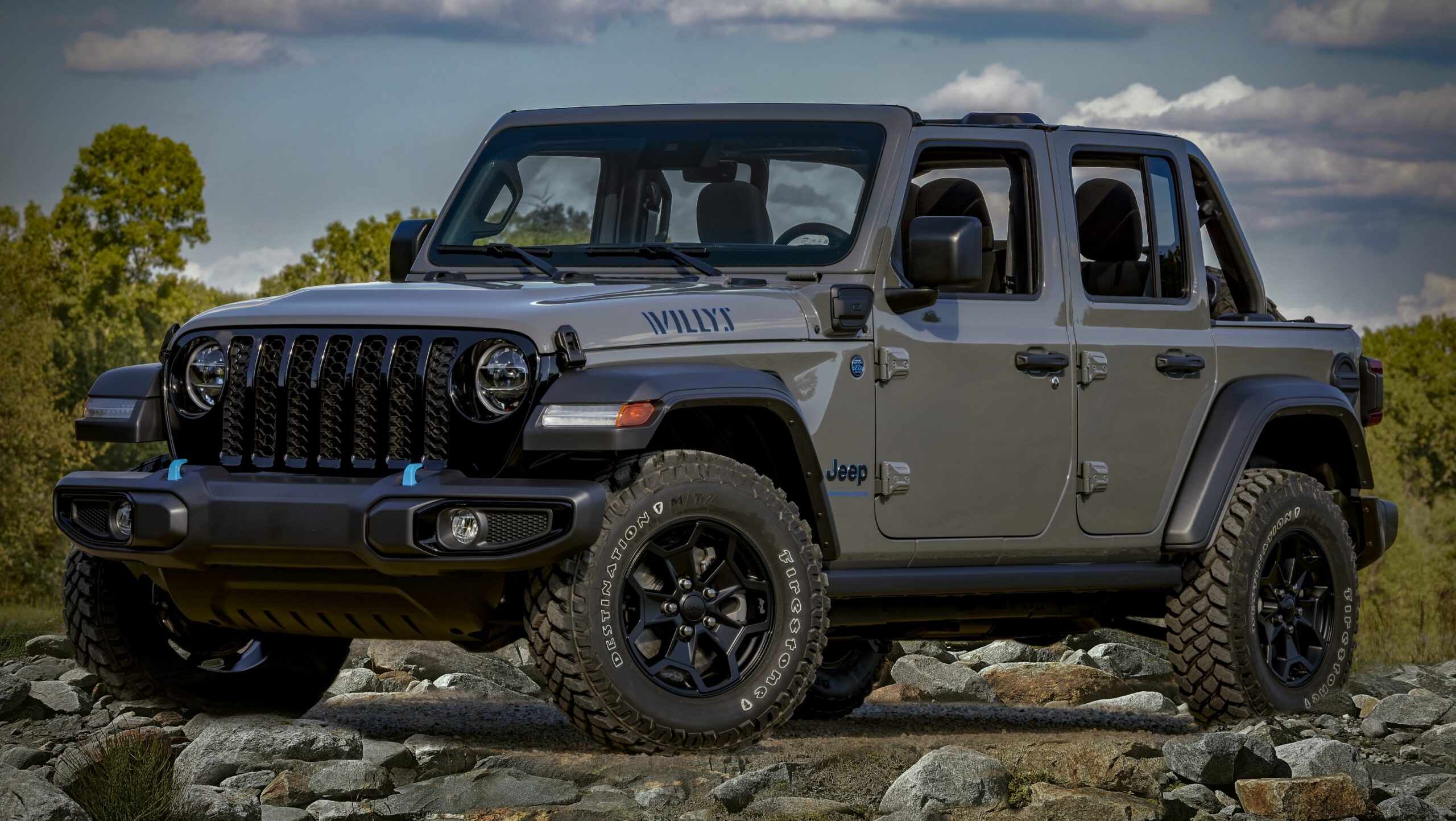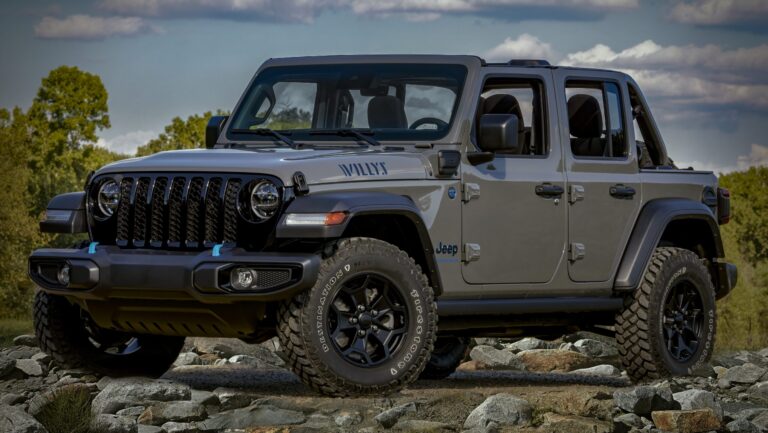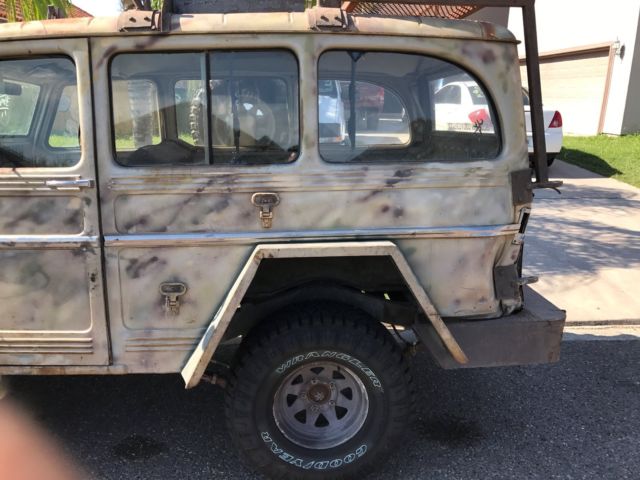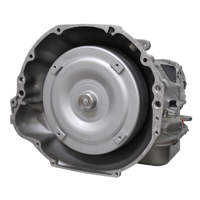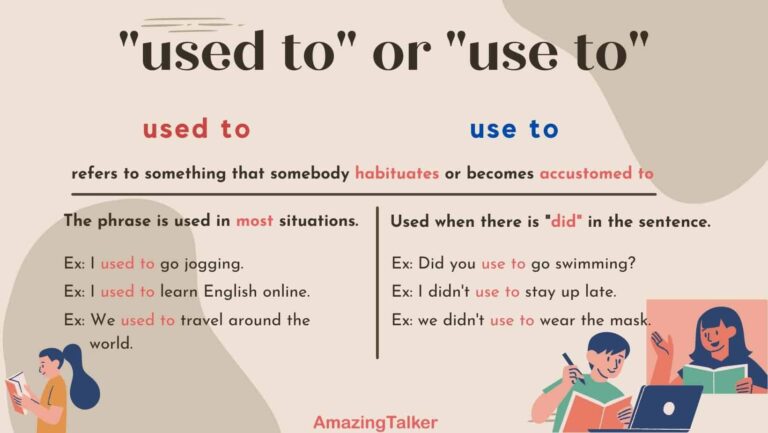Jeep WWII For Sale: Your Comprehensive Guide to Owning a Piece of History
Jeep WWII For Sale: Your Comprehensive Guide to Owning a Piece of History jeeps.truckstrend.com
Introduction: More Than Just a Vehicle – It’s a Legacy
The roar of an engine, the unmistakable silhouette, the rugged simplicity – few vehicles evoke the spirit of a bygone era quite like the Willys MB and Ford GPW, better known collectively as the WWII Jeep. Far from being mere relics, these iconic machines represent a pivotal moment in global history, embodying American ingenuity, resilience, and the relentless drive that helped secure victory in the Second World War. When one encounters "Jeep WWII For Sale," it’s not just an advertisement for a vintage vehicle; it’s an invitation to own a tangible piece of the past, a rolling monument to the "Greatest Generation."
Jeep WWII For Sale: Your Comprehensive Guide to Owning a Piece of History
For enthusiasts, collectors, and history buffs alike, acquiring a WWII Jeep is a profound experience. These vehicles are more than just transportation; they are a direct link to the battlefields of Europe, the jungles of the Pacific, and the training grounds across the globe. Their legendary versatility, robust construction, and sheer utilitarian design made them indispensable to Allied forces, earning them the moniker "the vehicle that won the war." This article serves as a comprehensive guide for anyone considering purchasing one of these magnificent machines, delving into their history, the market, what to look for, and the unique challenges and rewards of ownership.
The Enduring Legacy: Why WWII Jeeps Matter
The story of the WWII Jeep begins in 1940, as the United States military sought a lightweight, rugged, four-wheel-drive reconnaissance vehicle. After competitive bids from American Bantam, Willys-Overland, and Ford, the Willys-Overland design, primarily the "Quad" and later the "MB," emerged as the preferred choice. Due to the immense demand, Ford was also contracted to produce an almost identical vehicle, the "GPW," under license from Willys. Over 640,000 Jeeps were produced between 1941 and 1945, cementing their place in military history.
Their impact was monumental. From carrying troops and supplies to serving as ambulances, reconnaissance vehicles, and even mobile gun platforms, the Jeep proved itself indispensable in every theater of war. Its go-anywhere capability, ease of maintenance, and adaptability endeared it to soldiers and commanders alike. General George C. Marshall famously called it "America’s greatest contribution to modern warfare."
Today, this legacy translates into a vibrant collector’s market. Owning a WWII Jeep is about preserving history, participating in living history events, and enjoying a vehicle that offers a raw, unfiltered driving experience unlike anything modern. They are a testament to durable engineering and a symbol of freedom and resilience.
Navigating the Market: Where to Find a WWII Jeep
Finding a WWII Jeep for sale requires patience and knowing where to look. The market is diverse, ranging from pristine restorations to "barn find" projects.
- Specialized Vintage Vehicle Dealers: Many dealers specialize in military vehicles. These tend to offer restored or well-maintained examples, often with higher price tags but also with a degree of vetting and sometimes warranties.
- Online Marketplaces & Classifieds: Websites like eBay, Hemmings, Craigslist, and dedicated military vehicle classifieds (e.g., G503.com forums) are popular. They offer a wide range of conditions and prices but require careful scrutiny by the buyer.
- Auctions: Major automotive auctions (e.g., Mecum, Barrett-Jackson) occasionally feature high-end restored Jeeps. Military surplus auctions or estate sales can sometimes yield more affordable "project" vehicles.
- Military Vehicle Clubs & Forums: Joining a local or national military vehicle club is invaluable. Members often sell vehicles within the community, and these networks provide invaluable advice and leads. Word-of-mouth is still a powerful tool here.
- Private Sellers: Direct sales through enthusiasts or collectors can sometimes yield good deals, but always proceed with caution and thorough inspection.


Understanding the Variations: Willys MB vs. Ford GPW
While largely identical in appearance and function, there are subtle differences between the Willys MB and Ford GPW that are important for collectors seeking authenticity.
- Manufacturing Differences: Ford GPWs often have an "F" script stamped on many components (bolts, body panels, engine parts, etc.), a practice less common on Willys MBs.
- Grille: Early Willys MBs (up to mid-1942) featured a "slat grille" with flat steel bars, while later MBs and all GPWs used the iconic pressed-steel nine-slot grille.
- Data Plates & Serial Numbers: Both manufacturers used distinct serial number sequences and data plate designs. Authenticating these is crucial for verifying originality and production date.
- Minor Components: Enthusiasts can identify subtle differences in things like headlight buckets, fuel filters, and even the shape of certain body pressings.
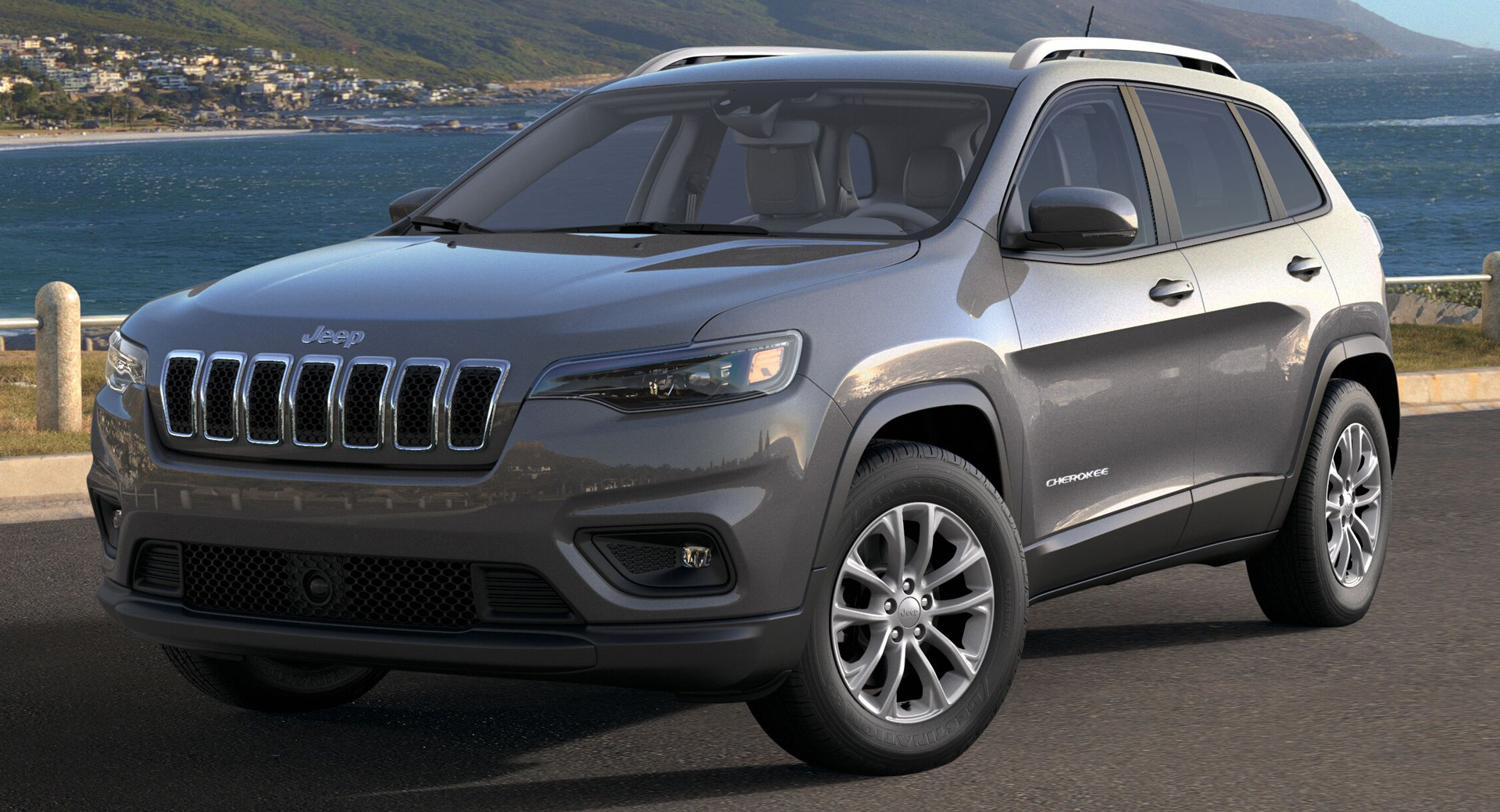
For a general user, either model offers the authentic WWII Jeep experience. For serious collectors, understanding these nuances can significantly impact value and desirability.
Condition Categories: What to Expect
The price and required effort depend heavily on the vehicle’s condition. Here’s a breakdown:
- Basket Case/Project: These are often disassembled, non-running, and require a complete, ground-up restoration. They are the most affordable to purchase but the most expensive and time-consuming to restore.
- Running Project: Operable but needs significant mechanical, electrical, and cosmetic work. These can be driven while being improved but expect ongoing expenses.
- Driver Quality: Functional, generally safe for road use, and presentable. May have some minor rust, non-original parts, or cosmetic imperfections. Good for parades and light use.
- Restored (Driver/Show Quality): These have undergone extensive restoration, often to a very high standard. "Driver" quality means it’s restored for use, while "Show" quality implies meticulous, historically accurate restoration for competition. These command premium prices.
- Original/Preserved: The holy grail for some collectors. These vehicles retain a significant percentage of their original paint, components, and even "patina" from their service life. Unrestored but well-preserved examples are rare and highly sought after.
The All-Important Inspection: What to Look For
Before making an offer, a thorough inspection is paramount. If you’re not an expert, hire one specializing in military vehicles.
- Frame: Inspect for rust, cracks, bends, or evidence of significant accidents. The frame is the backbone; damage here can be very costly.
- Body: Rust is the biggest enemy. Check floorboards, hat channels (underneath), fenders, and the tool indents. Look for excessive Bondo (body filler) which indicates rust repair or collision damage. Verify if panels are original or reproduction.
- Engine & Drivetrain: Check for leaks, unusual noises, and proper operation of the engine, transmission, transfer case, and axles. Verify originality of the engine block if possible (matching serial numbers were not always a thing, but correct type is).
- Electrical System: Look for frayed wires, non-original wiring, and ensure all lights, gauges, and accessories work.
- Brakes & Steering: Test these thoroughly. Worn steering components can lead to a "wandering" feel, and old brakes are a safety hazard.
- Serial Numbers & Data Plates: Crucial for authenticity. Verify the presence and legibility of the frame serial number, engine number (if applicable), and data plates on the dashboard. Cross-reference these with production records.
- Missing Parts: WWII Jeeps are over 80 years old. Missing or incorrect parts are common. Identify what’s missing and research the cost and availability of replacements. Some original parts are rare and expensive.
Cost Considerations: Beyond the Purchase Price
The sticker price is just the beginning. Owning a WWII Jeep involves ongoing expenses:
- Restoration Costs: If buying a project, expect to spend thousands, potentially tens of thousands, on parts, bodywork, paint, and mechanical repairs. Labor costs can be substantial if you’re not doing the work yourself.
- Parts: While many reproduction parts are available, original components can be scarce and expensive, especially engine parts or specific period accessories.
- Maintenance: Even a restored Jeep will require regular maintenance. Finding a mechanic familiar with vintage military vehicles can be a challenge.
- Insurance: Specialized classic car insurance is recommended.
- Storage: A dry, secure storage location is essential to prevent rust and theft.
- Transportation: Factor in shipping costs if buying from a distant location.
Tips for a Successful Purchase
- Do Your Research: Read books, consult online forums (G503.com is a treasure trove), and educate yourself on the specific models, common issues, and authenticity markers.
- Join a Military Vehicle Club: These communities offer unparalleled knowledge, support, and access to parts and even potential vehicles for sale.
- Get an Independent Inspection: Even if you’re knowledgeable, a second pair of expert eyes can spot things you missed.
- Verify Documentation: Ensure the vehicle has a clear title and any available historical paperwork.
- Set a Realistic Budget: Factor in not just the purchase price but also restoration, maintenance, and ongoing costs.
- Be Patient: The right Jeep at the right price might take time to find. Don’t rush into a purchase.
Potential Challenges and Solutions
- Authenticity: Many Jeeps have been modified or had parts replaced over the decades. Learn the specific markings and features of original vehicles. Consult experts or use online resources for verification.
- Parts Availability: While many reproduction parts exist, finding original, correct parts for a historically accurate restoration can be difficult and costly. Join clubs and network with other collectors.
- Mechanical Expertise: These vehicles require specific knowledge. Learn to do basic maintenance yourself, or find a trustworthy mechanic specializing in vintage military vehicles.
- Rust: It’s almost inevitable. A thorough pre-purchase inspection is critical. Be prepared for rust repair, which can be extensive and costly.
- Shipping/Transport: If buying remotely, arrange for specialized transport to avoid further damage or issues.
Price Table: Estimated Costs for a WWII Jeep (Willys MB / Ford GPW)
| Condition Category | Description | Estimated Price Range (USD) | Key Considerations |
|---|---|---|---|
| Basket Case / Project | Non-running, disassembled, significant rust/damage, missing parts. | $5,000 – $15,000 | Requires complete frame-off restoration; budget $20,000 – $50,000+ for restoration costs depending on desired quality. |
| Running Project | Runs but needs substantial mechanical, electrical, and cosmetic work. | $15,000 – $25,000 | Can be driven while being worked on; expect ongoing expenses for repairs and improvements. |
| Driver Quality | Operable, generally safe, presentable but not perfect. May have minor flaws. | $25,000 – $40,000 | Good for parades and light use; may still require some investment for reliability or cosmetic improvements. |
| Restored (Driver) | Fully restored for regular use, excellent mechanicals and good cosmetics. | $40,000 – $60,000 | Reliable and ready to enjoy; may not be 100% historically accurate in every detail. |
| Restored (Show) | Meticulously restored to historically accurate, concourse-level standards. | $60,000 – $100,000+ | Top-tier examples, often with matching numbers and correct components; suitable for competition and display. |
| Original / Preserved | Unrestored, largely original condition with authentic patina. Rare. | $50,000 – $150,000+ | Value depends heavily on originality, documentation, and specific history; highly sought after by serious collectors. |
Note: Prices are estimates and can vary significantly based on location, specific vehicle history, originality, documentation, and market demand.
Frequently Asked Questions (FAQ) about WWII Jeeps For Sale
Q1: Are all WWII Jeeps Willys Jeeps?
A1: No. While Willys-Overland designed the original "Jeep" (MB), Ford Motor Company also produced an almost identical version under license, called the Ford GPW, due to the high demand during the war.
Q2: How much does a WWII Jeep cost?
A2: The price varies widely depending on its condition, originality, and restoration quality. As detailed in the table above, prices can range from $5,000 for a "basket case" project to well over $100,000 for a meticulously restored or exceptionally original example.
Q3: Where can I find parts for a WWII Jeep?
A3: Many reproduction parts are available from specialized vendors online (e.g., Ron Fitzpatrick Jeep Parts, Army Jeep Parts). Original used parts can be found through military vehicle clubs, forums (like G503.com), swap meets, and private sellers.
Q4: Are WWII Jeeps street legal?
A4: Generally, yes, in most jurisdictions, as long as they meet basic safety requirements (lights, brakes, turn signals, etc.) and you can properly register and title them. However, they lack modern safety features like airbags or ABS, and their top speed is relatively low. Always check local regulations.
Q5: Is buying a WWII Jeep a good investment?
A5: While prices have steadily appreciated, especially for well-restored or original examples, it’s best to view a WWII Jeep as a historical artifact and hobby rather than a purely financial investment. The joy of ownership and participation in the community are often the true returns. Restoration costs can easily exceed the vehicle’s market value.
Q6: What’s the main difference between a Willys MB and a Ford GPW?
A6: Visually, they are nearly identical. The primary differences lie in subtle manufacturing markings (Ford often stamped an "F" on many components), specific part designs, and unique serial number sequences/data plates. Early Willys MBs also had a distinct "slat grille."
Q7: How do I verify the authenticity of a WWII Jeep?
A7: Authenticity is primarily verified through inspecting frame and engine serial numbers, data plates, and checking for correct period-specific parts and markings. Consulting historical records, expert opinions, and joining military vehicle clubs are crucial steps. Be wary of vehicles with missing or reproduction data plates.
Conclusion: Driving History Home
The quest for a "Jeep WWII For Sale" is more than just a search for a vehicle; it’s a journey into history, engineering, and a passionate community. Owning a Willys MB or Ford GPW is an unparalleled opportunity to connect with the past, to feel the raw, unfiltered experience of a machine that played a pivotal role in shaping the modern world.
While the path to ownership involves careful research, financial planning, and a willingness to embrace the quirks of vintage machinery, the rewards are immeasurable. Whether you envision yourself participating in living history events, showcasing it at car shows, or simply enjoying a weekend drive, a WWII Jeep is a powerful statement. It’s a testament to enduring design, a symbol of freedom, and a tangible piece of the "Greatest Generation" that you can truly drive home. It’s not just a Jeep; it’s a living legend.

